28 Rare Italian White Grapes to Discover This Season
Italian white grapes represent a vibrant tapestry of flavors waiting to be savored by wine enthusiasts.
These remarkable varieties grow across diverse landscapes, each telling a unique story of terroir and tradition.
Regional microclimates nurture delicate vines that produce distinctive, complex wines with remarkable character.
Winemakers carefully cultivate these grapes, transforming sunlight and soil into liquid poetry that captures the essence of italy's rich viticultural heritage.
Crisp, aromatic, and nuanced, these white grape varieties offer an incredible range of sensory experiences that tantalize the palate.
Some grapes thrive in coastal regions, while others flourish in mountain valleys, creating a stunning mosaic of wine potential.
Each grape carries centuries of agricultural wisdom and cultural significance within its delicate skin.
Uncover the fascinating world of these 28 unique Italian white grapes that promise an unforgettable journey through taste and tradition:
Italian White Grapes Types Behind Classic Wines
Italy’s vineyards are full of white grapes with names as lyrical as their flavors. Learn which varieties make the country’s celebrated crisp, floral, and mineral-driven wines.
Falanghina
Falanghina represents a historic white grape variety native to Italy's Campania region, producing distinctive straw-colored wines with complex mineral and tropical fruit undertones.
Ancient vineyards across Campania cultivate two primary sub-varieties: Falanghina Beneventana and Falanghina Flegrea, which share remarkable genetic similarities.
Winemakers blend these grapes into regional appellations, creating crisp white wines with elegant floral characteristics.
Regional vintners carefully harvest the grapes to preserve their unique aromatic profile.
Wine enthusiasts appreciate Falanghina for its nuanced flavor complexity and refreshing taste.
Italian wine traditions have long celebrated this grape's unique terroir and winemaking potential.
Mediterranean climate conditions contribute significantly to the grape's distinctive qualities.
Sommelier experts consider Falanghina an exceptional expression of Campanian wine culture.
Friulano
Friulano represents a unique white grape variety originating in southwest France but finding its true home in northeastern Italy's Friuli-Venezia Giulia region.
Winemakers prize this grape for its distinctive character and subtle complexity, producing wines with elegant apple, pear, and peach aromatics.
Mineral undertones define younger vintages, creating a crisp and refreshing drinking experience.
Small vineyard plantings exist in Chile and Slovenia, where it goes by alternative names like Sauvignon Vert and Zeleni Sauvignon.
Italian producers craft these wines in styles ranging from light-bodied to more intricate expressions.
Terroir and careful vinification techniques significantly influence the grape's final profile.
Wine enthusiasts value Friulano for its versatility and nuanced flavor spectrum.
Regional traditions and meticulous winemaking methods ensure this grape continues to intrigue international wine lovers.
Fiano
Fiano represents an ancient Italian white wine grape originating in Campania with remarkable renaissance since 1980s, producing medium-bodied wines characterized by intense flavor profiles and complex aromatic notes.
Winemakers prize this low-yielding, early-ripening variety for its exceptional crisp and herbaceous characteristics.
Young wines showcase distinctive honey aromas while aged versions develop sophisticated smoky and spicy hazelnut undertones.
Bright acidity provides perfect balance throughout the wine's flavor spectrum.
Vineyards predominantly cultivate Fiano in southern Italian regions, particularly Campania.
Grape clusters produce wines with significant complexity and depth.
Experienced vintners carefully manage its limited yield to maximize quality and concentration.
Wine enthusiasts appreciate its unique sensory experience and historical significance.
Verdicchio
Verdicchio wines are crisp Italian white wines renowned for their vibrant citrus and stone fruit profiles originating from Marche's prestigious wine regions.
These versatile wines feature high acidity with distinctive flavor notes including fresh apple, ripe peach, and delicate floral undertones complemented by subtle almond nuances that evolve into marzipan-like expressions during aging.
Two primary appellations, Verdicchio dei Castelli di Jesi and Verdicchio di Matelica, produce exceptional examples of this grape variety.
Winemakers craft these wines to serve as elegant aperitifs or perfect accompaniments to seafood, poultry, and pasta dishes.
Regional vintners carefully select grapes to ensure balanced and refreshing wine expressions.
Verdicchio's lightweight character makes it an ideal summer wine for relaxed dining experiences.
Moderate alcohol levels contribute to its smooth drinking profile.
Skilled producers continue to elevate this grape's reputation through meticulous vineyard management and refined winemaking techniques.
Vermentino
Vermentino are crisp Mediterranean white wines bursting with refreshing coastal character and mineral complexity.
Mediterranean grape varieties produce these light-bodied wines predominantly in Northern Italy and Sardinia.
Coastal vineyards contribute a distinctive saline quality to Vermentino's flavor profile.
Aromatic notes include bright citrus like lemon and lime alongside green apple and pear nuances.
Delicate floral undertones and Mediterranean herb hints enhance the wine's elegant structure.
Winemakers carefully cultivate these grapes to maintain high acidity and pure fruit expressions.
Sommelier recommendations often highlight Vermentino's versatility with seafood and light summer dishes.
Ideal serving temperatures range between 45-50 degrees Fahrenheit for maximum flavor enjoyment.
Inzolia
Inzolia is a distinctive Italian white grape variety originating in Sicily with subtle complexity and unique flavor profile.
Winemakers prize this grape for its exceptional ability to produce straw-colored wines with pronounced floral and nutty characteristics.
Sicilian vintners often blend Inzolia with Catarratto to enhance its natural qualities and create balanced white wines.
Mimosa, apricot, peach, and citrus notes dominate its aromatic spectrum, creating an inviting sensory experience.
Marsala wine historically showcased Inzolia's potential, though modern winemaking techniques have expanded its versatility.
Low to medium acidity gives these wines a smooth, round mouthfeel that appeals to wine enthusiasts.
Small plantings in Tuscany demonstrate the grape's adaptability beyond its Sicilian homeland.
Mineral undertones complete the wine's elegant and nuanced flavor profile.
Forastera
Forastera grapes are distinctive white Italian wine varietals native to Ischia's volcanic landscapes, originating from foreign Mediterranean regions.
Spanish or Greek immigrants first introduced these grapes to Campania's coastal terrain, where they flourished in unique mineral-rich soils.
Small to medium grape clusters produce crisp wines with remarkable citrus and green apple profiles.
Greenish-yellow berries develop exceptional freshness and balanced acidity unique to the island's microclimate.
Mediterranean breezes and volcanic earth contribute complex mineral undertones to the wine's character.
Compact grape bunches yield elegant white wines prized by wine enthusiasts.
Ischia's winemakers carefully cultivate these grapes to showcase their distinctive regional expression.
Forastera wines represent a pure reflection of their extraordinary geographical origins.
Semidano
Semidano white wines reveal Sardinia's rare grape heritage, originating from ancient vineyards near Oristano and surviving despite phylloxera's devastating impact.
Mediterranean winemakers carefully preserve this nearly extinct varietal within Sardegna Semidano DOC regulations.
Straw-colored wines from these grapes offer crisp, refreshing profiles with balanced acidity.
Small vineyard plots around Oristano still cultivate this historic grape variety.
Dry, sparkling, and sweet passito styles emerge from Semidano's versatile character.
Mogoro subzone produces particularly exceptional expressions of this white wine.
Traditional winemaking techniques help maintain Semidano's unique genetic lineage.
Regional wine experts consider Semidano a precious link to Sardinian viticultural traditions.
Catarratto
Catarratto are Sicilian white grapes with a remarkable transformation from forgettable bulk wines to elegant, mineral-driven white wines that showcase Sicily's winemaking potential.
Abundant throughout Sicily, these grapes produce high-yield wines with complex aromatic profiles spanning citrus, apricot, jasmine, and orange blossom notes.
Wine producers have recently elevated this ancient grape variety by employing more sophisticated winemaking techniques.
Primarily used in Sicilia DOC wines, Catarratto delivers good body and nuanced flavor complexity.
Most vineyards grow this grape as a primary white wine variety.
Traditional winemaking practices initially undervalued Catarratto's potential.
Modern vintners now recognize its unique characteristics and terroir-driven expression.
Sicily's winemaking renaissance has significantly improved Catarratto's reputation and quality.
Glera
Glera grapes are ancient Italian white wine varietals with deep historical roots in Roman viticulture.
These grapes dominate sparkling Prosecco production across Veneto and Friuli Venezia Giulia regions of northeastern Italy.
Wine experts renamed the grape variety from Prosecco to Glera to protect the wine's geographical designation and ensure authentic regional production.
Specific Protected Designation of Origin regulations now govern Prosecco manufacturing, preventing international wineries from using the prestigious label.
Grape cultivation spans nearly 2,000 years, reflecting remarkable agricultural continuity in Italian winemaking traditions.
Vintners carefully select and cultivate these grapes to maintain high-quality sparkling wine standards.
Most Glera grapes grow in specific microclimates that enhance their unique flavor profile.
Italian winemaking techniques transform these grapes into internationally celebrated sparkling wines enjoyed worldwide.
Biancolella
Biancolella represents a rare white grape native to Italy's coastal Campania region, producing aromatic wines with complex Mediterranean herb and citrus profiles.
Grown primarily on volcanic Ischia island, this grape thrives in unique terroir near Naples and Caserta.
Winemakers craft straw-colored wines showcasing distinctive herbal and mineral characteristics.
Subtle tropical fruit and almond notes emerge in ripe vintages.
Wines display elegant aromas ranging from citrus to yellow fruit nuances.
Terroir significantly influences each wine's individual expression.
Volcanic soils contribute distinctive mineral undertones.
Small production volumes make these wines particularly intriguing for wine enthusiasts.
Albana
Albana wines are prestigious Italian white wines from Emilia-Romagna that earned Italy's first DOCG white wine designation, representing exceptional regional viticulture.
Golden yellow in color, these wines boast complex aromatics of ripe stone fruits like apricots and peaches with subtle floral notes of acacia and hawthorn.
Winemakers craft Albana in multiple styles, ranging from crisp dry versions to luscious sweet passito dessert wines.
Passionate Italian vintners carefully select and process these grapes to maximize their natural qualities.
Grape clusters produce wines with balanced acidity that ensures freshness even in sweeter expressions.
Younger dry styles offer immediate drinking pleasure with vibrant fruit characteristics.
Aged sweet versions develop remarkable depth and nuanced flavor profiles over time.
Sophisticated wine enthusiasts appreciate Albana's versatility and elegant regional expression.
Muscat Of Alexandria (Zibibbo)
Zibibbo is a legendary Sicilian grape variety renowned for its remarkable resilience and extraordinary aromatic profile spanning centuries of winemaking tradition.
Ancient Arabs introduced this grape to Sicily, with its name translating to "dried grape" in Arabic.
Muscat of Alexandria grapes produce incredibly fragrant wines ranging from dry styles with bright citrus and floral notes to dense, honeyed dessert wines layered with complex flavors of candied fruits, figs, dates, and nuts.
Small island vineyards on Pantelleria specialize in cultivating these unique grapes, which thrive in challenging warm climates.
Genetic studies suggest Zibibbo represents one of the oldest unmodified vine varieties still in existence.
Winemakers carefully harvest these grapes to showcase their natural sweetness and intense aromatics.
Premium Zibibbo wines reflect generations of Sicilian agricultural expertise and Mediterranean terroir.
Each bottle captures the grape's rich historical and sensory heritage.
Moscato Bianco
Muscat Blanc a Petits Grains are small-berried grapes renowned for creating some of the world's most fragrant wines spanning multiple global wine regions.
French winemakers celebrate this ancient grape variety for producing intensely aromatic wines with distinctive floral and fruity characteristics like orange blossom, rose petals, apricot, and peach.
Sweet fortified wines from France's Rhone Valley and Languedoc-Roussillon regions showcase its exceptional qualities, while Italian producers transform these grapes into the famous low-alcohol Moscato d'Asti.
Spanish vintners similarly craft sweet Moscatel wines using this versatile grape.
Dry versions offer crisp, refreshing profiles with bright fruit notes perfect for light meal pairings.
Moscato Bianco, as it's known in Italy, demonstrates remarkable adaptability across different winemaking techniques.
Arneis
Arneis grapes produce exceptional white wines from Piedmont's Roero region, originating possibly during Roman times and narrowly escaping extinction between world wars.
Winemakers rediscovered its potential in the 1960s, transforming this native Italian grape into a refined wine variety.
Medium-bodied wines feature fresh, fruity profiles with distinctive apple, pear, and citrus notes and subtle herbaceous undertones.
Balanced acidity makes Arneis an ideal companion for lighter cuisine like seafood and pasta dishes.
Roero Arneis DOCG represents the highest quality designation for this wine.
Sommelier experts prize its elegant character and complex flavor profile.
Wine enthusiasts appreciate its crisp, refreshing taste and versatile drinking experience.
Regional winemakers continue preserving and celebrating this historic grape variety.
Passerina
Passerina is a versatile white Italian grape variety native to Marche that produces crisp, aromatic white wines with bright fruit and floral characteristics.
Dry varietal wines from this grape offer light, refreshing profiles with pronounced notes of peaches, apples, and pears complemented by subtle herbal and citrus undertones.
Winemakers primarily cultivate Passerina in regions like Marche, Abruzzo, Emilia-Romagna, and Lazio, often blending it with Pecorino and Trebbiano Toscano.
Its high acidity and fresh qualities make it an excellent companion for seafood dishes and appetizers.
Offida DOCG includes Passerina in its regional appellations, highlighting the grape's significance in Italian winemaking.
Most Passerina wines are best consumed young to preserve their vibrant fruit flavors.
Vintners typically create these wines to be enjoyed as an aperitif or alongside light meals.
Garganega
Garganega grapes dominate Italy's white wine landscape, thriving primarily in Veneto and producing exceptional Soave and Gambellara DOC wines.
Winemakers craft this versatile grape into dry, dessert, and sparkling styles with distinctive characteristics.
Straw yellow in color, these wines evolve to deeper hues as they age, reflecting their complexity.
Dry varieties showcase elegant aromas of flowers, crisp apples, and subtle almonds.
Dessert wines offer rich sensory experiences with pronounced honey and dried fruit notes.
Italian vintners carefully cultivate Garganega across multiple regions, highlighting its adaptability.
Wine enthusiasts appreciate its nuanced flavor profile and traditional production methods.
Regional winemaking techniques further enhance Garganega's unique terroir-driven expressions.
Moscato Di Terracina
Moscato di Terracina is a rare white grape variety native to Latina, Lazio, rescued from near extinction and celebrated for its remarkable versatility in crafting diverse wine styles.
Winemakers transform this grape into dry, sweet, and sparkling wines with deep yellow hues and complex aromatic profiles.
Tropical fruit and apricot scents dominate its bouquet, complemented by subtle herbal undertones.
Before earning its DOC status, these wines belonged to the Lazio IGT classification.
Vintners carefully cultivate this grape in small quantities around Terracina.
Delicate herbal notes enhance its characteristic flavor spectrum.
Each sip reveals intricate layers of complexity.
Almond-like hints emerge in the wine's lingering finish.
La Malvasia Bianca Di Candia
Malvasia Bianca di Candia is a historic white grape variety originating from Greece, named after the ancient Venetian term for Crete.
Primarily cultivated in Italy's Lazio region, especially Castelli Romani, this grape spreads across Emilia-Romagna, Umbria, Tuscany, Liguria, and Lombardy.
Unlike its aromatic cousin Malvasia di Candia Aromatica, this variety offers subtle characteristics ideal for blending.
Winemakers frequently combine it with Trebbiano Toscano to create light, fresh white wines.
Regional DOC wines like Castelli Romani Bianco, Cerveteri Bianco, and Colli Albani Bianco showcase its versatility.
Italian vintners value its adaptability in producing balanced white wine blends.
Wine enthusiasts appreciate its soft, elegant profile that contributes complexity without overwhelming the palate.
Vernaccia
Vernaccia is a prestigious white wine grape variety native to San Gimignano in Tuscany, Italy, renowned for producing sophisticated white wines with remarkable complexity and regional character.
Grown exclusively in its historic hometown, this ancient grape creates straw-yellow wines with subtle greenish hues that transform into golden tones as they mature.
Wine enthusiasts cherish its crisp profile featuring bright citrus, green apple, and delicate white flower aromas that reflect the region's unique terroir.
Vernaccia di San Gimignano offers incredible versatility, pairing wonderfully with seafood, poultry, and vegetarian dishes while maintaining exceptional freshness.
Sommelier experts consider it one of Italy's most distinguished white wine varieties with centuries of winemaking tradition.
Sophisticated palates appreciate its ability to deliver both young, vibrant expressions and more nuanced, complex aged versions.
San Gimignano's winemakers carefully cultivate these grapes to maintain their distinctive regional signature.
Turbiana
Turbiana is a rare white wine grape variety nestled in northern Italy's Lugana DOC region near Lake Garda, producing crisp and aromatic wines with distinctive character.
Native to the calcareous clay soils, this grape yields pale straw-yellow wines with vibrant citrus and green apple notes.
Subtle white flower and almond hints complement its refreshing profile, creating a complex sensory experience.
Wine enthusiasts appreciate Turbiana's bright acidity and mineral undertones that reflect its unique terroir.
Though sometimes confused with Trebbiano di Lugana and Verdicchio, the grape maintains its own identity.
Skilled winemakers carefully cultivate these grapes to showcase their natural elegance.
Young Turbiana wines offer immediate freshness, while aged versions develop deeper complexity.
Regional traditions and careful production methods ensure each bottle represents the best of Italian white wine craftsmanship.
Nasco
Nasco are rare Sardinian white wines crafted from indigenous grapes grown primarily around Cagliari, delivering exceptional dessert wines with complex sensory profiles.
Wines from this grape feature distinctive honey and apricot aromas complemented by subtle spice nuances.
Southern Sardinian vineyards cultivate these grapes to produce unique DOC-certified wines with remarkable mineral undertones.
Nasco varieties range from dry to fortified styles, demonstrating remarkable versatility.
Small production volumes make these wines particularly intriguing for wine enthusiasts.
Balanced acidity and natural sweetness characterize these elegant expressions.
Regional winemaking traditions ensure meticulous grape selection and careful fermentation processes.
Mediterranean terroir significantly influences the grape's exceptional aromatic characteristics.
Spergola
Spergola is a rare white grape from Emilia Romagna that produces versatile wines with exceptional crisp and mineral characteristics.
Italian winemakers primarily cultivate this grape around Reggio Emilia, creating wines ranging from dry to sparkling and dessert styles.
Straw-colored and bright, spergola wines offer refreshing flavors of white flowers like jasmine and acacia.
Green apple and citrus notes dance across the palate with lively acidity.
Mineral undertones make these wines incredibly approachable and food-friendly.
Dry spergola pairs beautifully with seafood and light pasta dishes.
Sommelier experts consider this grape a hidden gem of Italian viticulture.
Wine enthusiasts appreciate its unique aromatic profile and crisp texture.
Mantonico Bianco
Mantonico Bianco is a rare white grape variety exclusively grown in Calabria, Italy, with potential ancient Greek roots.
Winemakers craft both dry and sweet styles from this unique grape, producing elegant white wines with complex herbal, citrus, and peach characteristics.
Sweet passito wines showcase golden yellow hues and intense floral aromas with candied and dried fruit notes.
Dry versions pair perfectly with seafood and pasta dishes.
Mineral undertones add depth to its profile.
Calabrian IGT designations highlight its regional significance.
Wine enthusiasts appreciate its balanced sweetness and refreshing qualities.
Small production volumes make Mantonico Bianco a distinctive and sought-after varietal.
Arilla
Arilla grapes create distinctive white wines native to southern Italy, particularly thriving on Ischia island with exceptional productivity.
Sicilian in origin, these rare white grapes contribute complex flavor profiles to Ischia Bianco wine blends.
Winemakers carefully manage Arilla's high-yield potential to prevent bland outcomes and maximize wine quality.
Vineyard techniques focus on enhancing the grape's natural medium acidity and freshness.
Italian wine experts continue researching and promoting Arilla as a promising regional variety.
Grape cultivation strategies aim to unlock its full flavor potential.
Ischia remains the primary geographic center for Arilla wine production.
Wine enthusiasts increasingly recognize this unique southern Italian grape varietal.
Nosiola
Nosiola are rare white wines from Trentino with distinctive hazelnut characteristics derived from their unique grape variety.
Native to northeastern Italy, these wines showcase a singular heritage as the last remaining Trentino grape variety.
Dry Nosiola wines offer light-bodied profiles with refreshing mineral undertones and bright citrus notes.
Winemakers craft both dry and sweet expressions, including the exceptional Vino Santo made from grapes affected by noble rot.
Each bottle carries delicate aromas of lemon and apple balanced with a signature nutty essence.
Historically cultivated across Alto Adige, Nosiola now grows exclusively in Trentino's vineyards.
Traditional production methods preserve this grape's remarkable legacy.
Wine enthusiasts value Nosiola for its unique sensory experience and cultural significance.
Roscetto
Rossetto is a rare Italian white grape variety originating in Lazio, producing intense and rich wines with unique characteristics.
Winemakers craft exceptional dry and late-harvest styles from these finicky grapes, which occasionally develop a light pink hue.
Subtle herbal nuances and ripe fruit aromas define the wine's complex profile.
Soft and creamy on the palate, Rossetto wines offer well-balanced acidity and potential vanilla and honey notes with aging.
Wine enthusiasts appreciate its versatility in pairing with fish, vegetables, and white meats.
Regional names like Greco and Greco Giallo add to its intrigue, though unrelated to similar-sounding grapes from Campania and Calabria.
Vintners carefully cultivate this uncommon grape to create distinctive white wine expressions.
Despite its rarity, Rossetto demonstrates remarkable potential in Italian winemaking.
Timorasso
Timorasso wines emerge as rare Piedmont treasures with extraordinary complexity and survival stories.
Rescued from near extinction by passionate winemakers, these white wines boast intense floral and fruity profiles highlighting citrus, apple, and peach notes.
Winemaker Walter Massa pioneered the grape's revival in Alessandria, preventing its complete disappearance after devastating phylloxera and world war challenges.
High-acid wines develop remarkable depth with aging, transforming into elegant expressions featuring honeyed, nutty, and mineral undertones.
Producers now collectively embrace the Derthona label to celebrate this unique varietal's heritage.
Regional winemaking communities have rallied around Timorasso's potential, creating a renaissance for this exceptional grape.
Small production volumes make these wines particularly sought after by wine collectors and enthusiasts.
Distinctive terroir and meticulous cultivation ensure Timorasso represents a true Italian wine gem.
What Winemaking Techniques Are Common in Italian White Wine Production?
Italian white wines are crafted using a variety of traditional and modern techniques that emphasize freshness, aroma, and balance:
What Types of Dishes Best Highlight Specific Italian White Grape Profiles?
Pairing Italian white wines with dishes that complement their unique characteristics enhances the dining experience:
Matching the wine’s acidity, body, and aroma with complementary flavors in food allows Italian whites to truly shine.

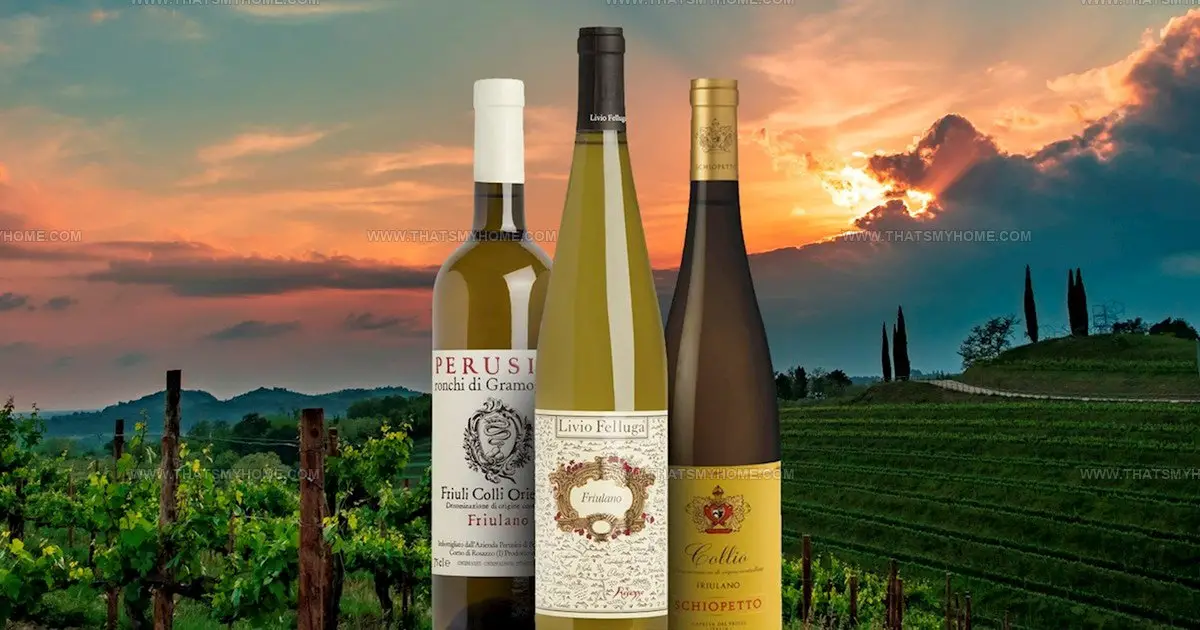
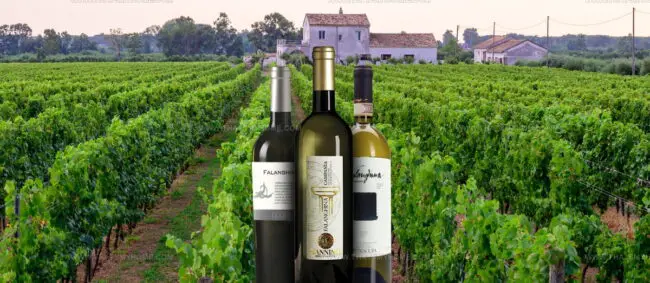
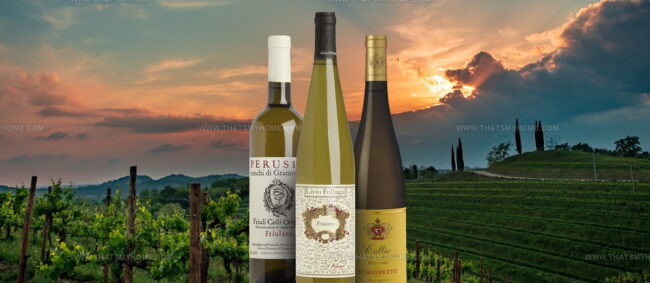
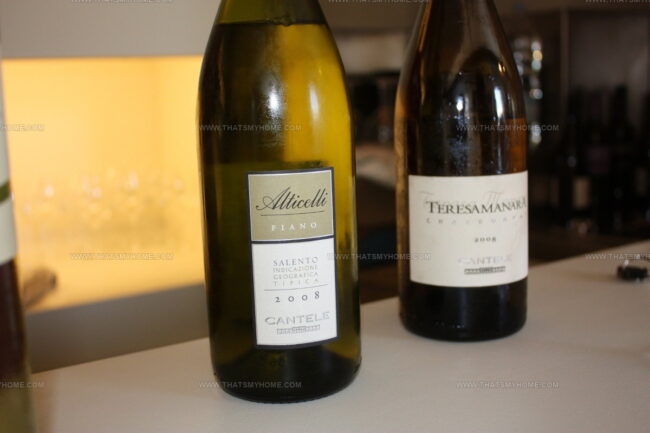
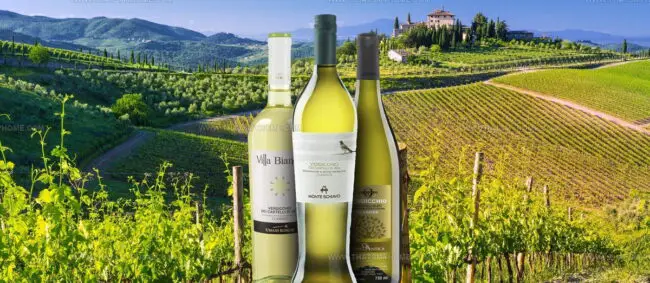
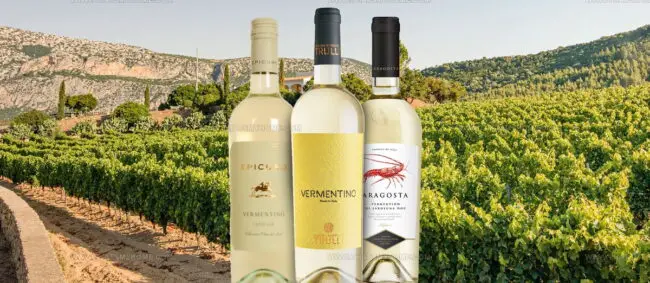
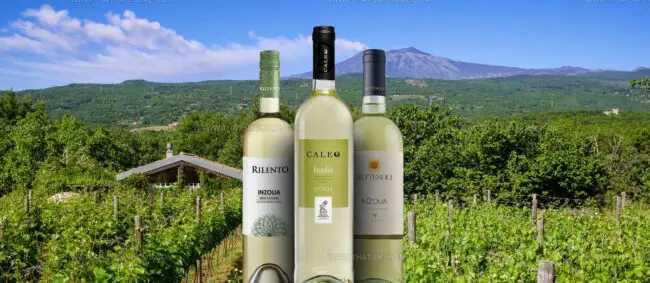
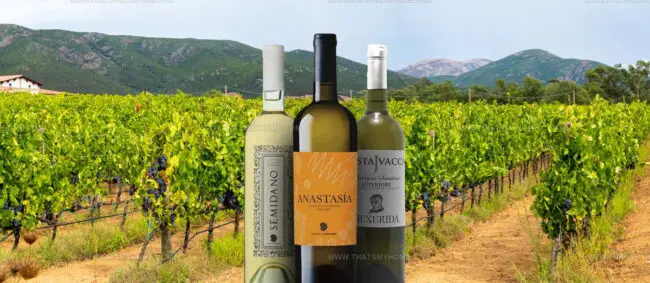
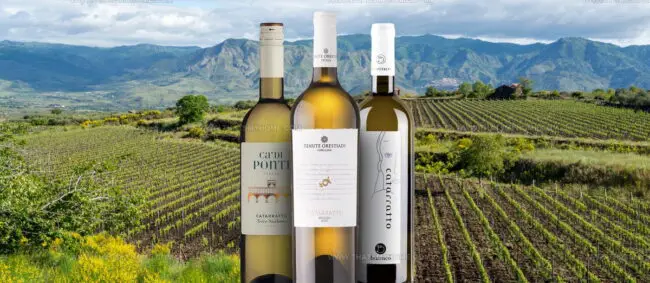
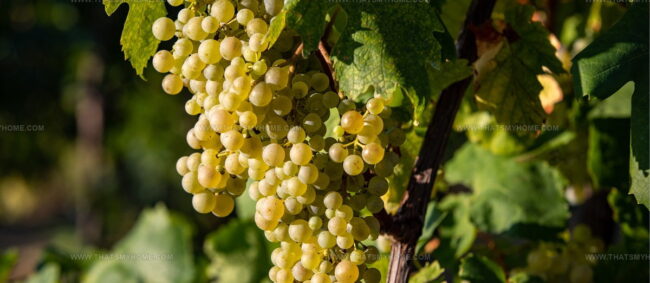
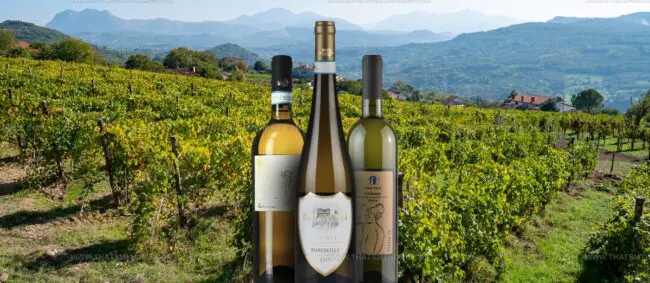
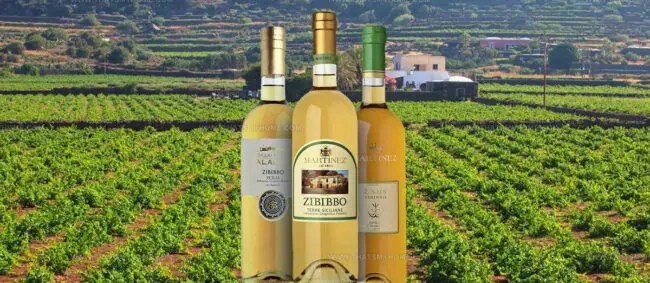
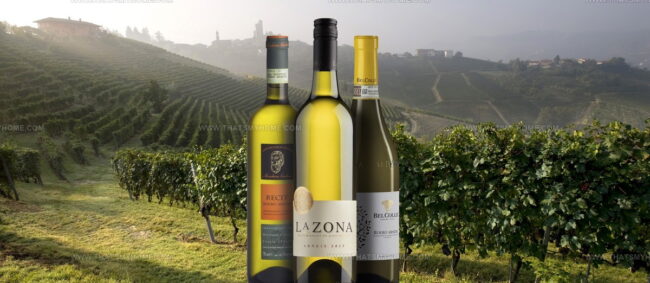
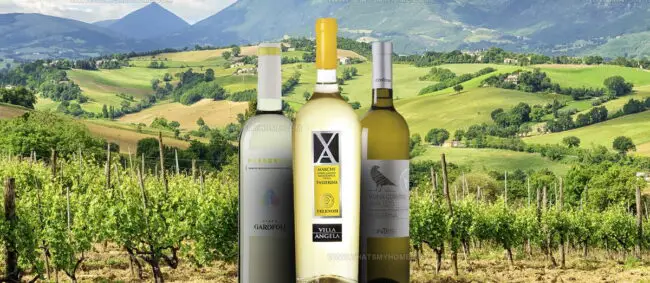
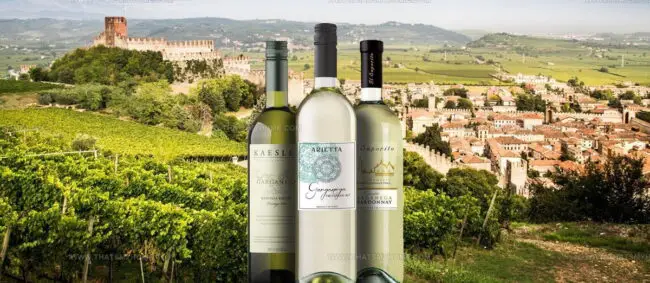
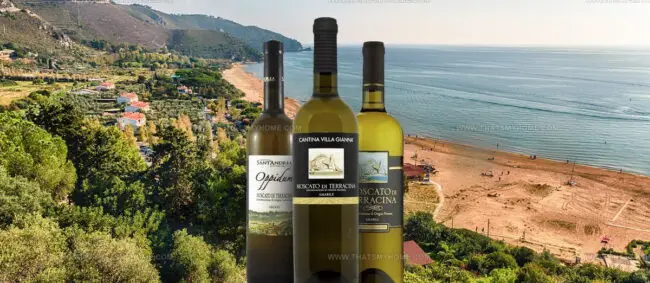
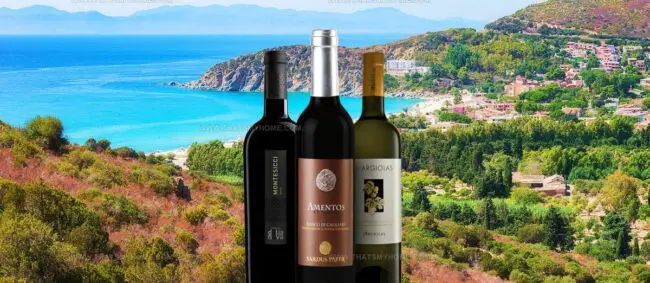
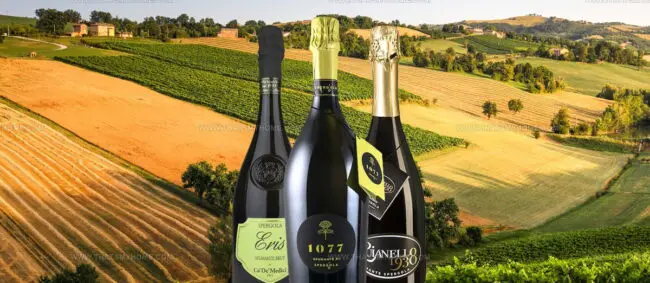
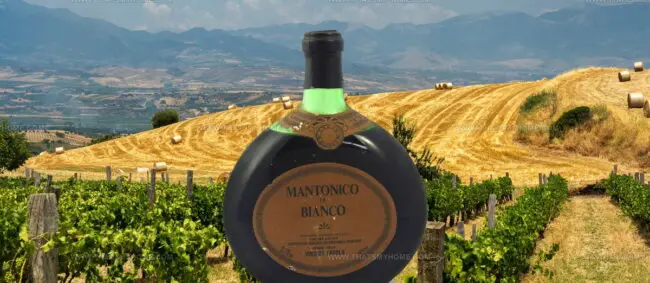
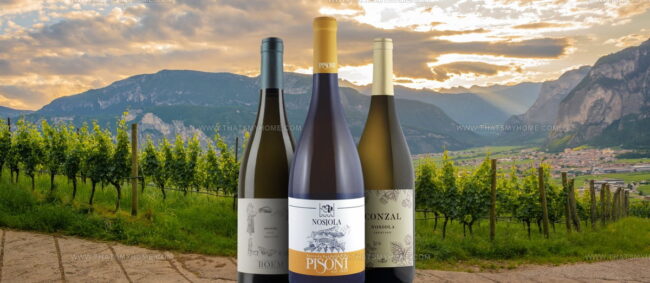
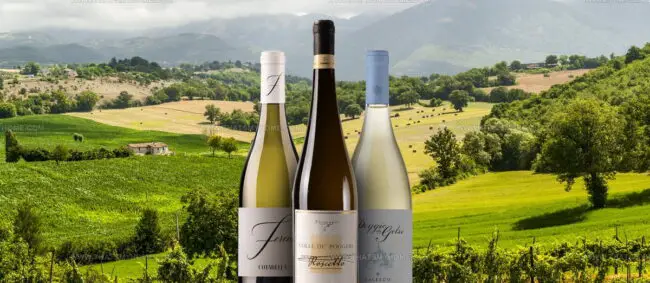
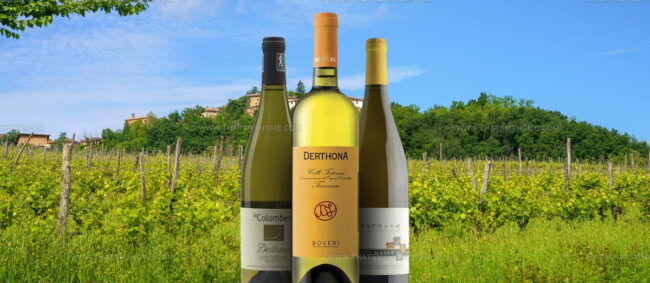
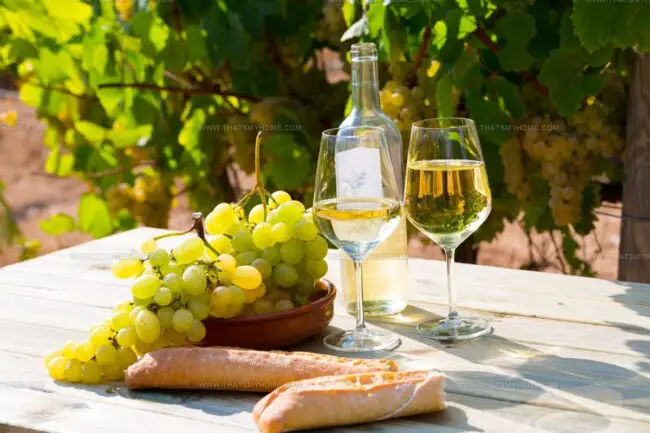
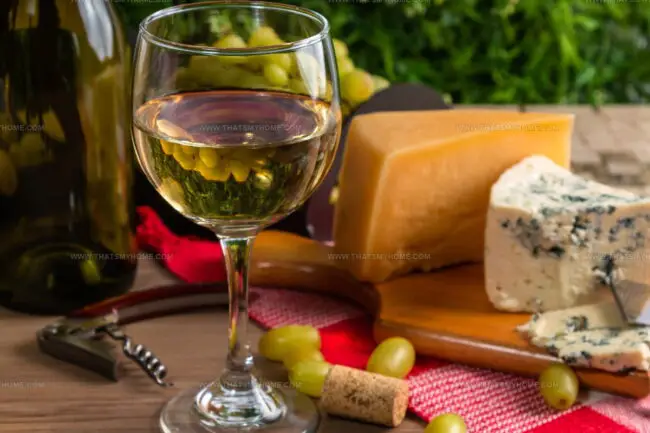
Mary Ellen
Founder, Pastry Chef & Recipe Developer
Expertise
Education
Savannah Technical College
Mary Ellen is the heart and soul of thatsmyhome.com. As the founder, pastry chef, and recipe developer, she refined her skills at Savannah Technical College with an Associate of Applied Science in Culinary Baking & Pastry Arts.
Mary blends classic techniques with modern twists to make artisanal breads, beautifully crafted pastries, and desserts full of unique flavor. Her passion is evident in every recipe, and she enjoys sharing her expertise through hands-on pastry workshops and insightful articles in local culinary magazines.